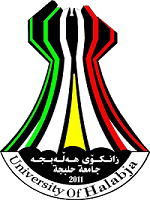Third cinema and the crisis of Identity: Kurdish cinema’s attempt to find a position in the mind of the others
DOI:
https://doi.org/10.32410/huj-10312Keywords:
Third world, Identity, Transnational Cinema, Third CinemaAbstract
In the world of cinema, many terms have emerged that define ap articular wave or cinema style. These terms became an identity to identify and frame these forms. Among these concepts there is a different wave of cinema that film criticism has not been able to identify it, in appropriate framework. However, it has been searching for its own identity through the experiences of different national cinemas and has long been known as the third cinema in relation to the Third World.
The origin of the term was taken from the political and economic classifications that divided the worlds according to their affiliations. Therefore, a group of directors emerged with different identities working in a variety of styles to strengthen the concept and support its characteristics. Accordingly, it has become a known wave, critics and cinema theories have dealt with it more widely.
This wave treats cinema as a universal existence and considers its universalness in that it becomes a communication mechanism in its deepest senses. It is leading to the audience, despite of their intellectual, cultural and ethnic affiliation.
The third cinema remains in constant search for a consistent identity, but with the emergence of any new cinematic form belonging to those countries that gather under the name of the Third World, attempts to stabilise a permanent frame or form with a fixed identity are thwarted. That is because the universalness that some third world directors call for, as an entry point into other worlds, can only come from a surplus of awareness of national identity. This will appear when the director assimilates his cultural heritage and his immediate issues and turns them into common humanitarian issues.
This study attempts to explore new territories to learn the specificities of this cinematic approach and to find new approaches to prevent the maze of degenerative what the filmmakers built with their creative efforts. Also, looking at the attempts of Kurdish filmmakers to build different structure far from the mainstream. It offers other keys and alternatives such as transnational cinema to cross borders drawn by states. To overcome the obstacles that block the way in front of an art work, we must take advantage of recent researches and studies presented in this field by western researchers and academics. In order to address this problem, it is necessary to dismantle the structure of cinema, as a means of communication and a visual medium that has the ability to penetrate in many areas that other arts cannot in terms of technical capacity and reach the recipient with minimal effort in particular.
The problem of identity can overwhelm by entering the world of the others who represent the center by adopting what a group of researchers and filmmakers from around the world are trying to work for. Thus, the researcher urges, through the concepts and values of theoretical aspects that filmmakers use to go through a new approach, this can liberate them from ethnic obligations, and pushes them into wider territories that represent humanity without losing their cultural identities.
References
- Gabriel, Teshome (1986): “Third Cinema as Guardian of Popular Memory Towards a Third Aesthetics”. Available at: http://teshomegabriel.net/third- cinema-as-guardian-of-popular- memory.
-Guneratne, R. Anthony (2003): “Rethinking Third Cinema” eds. Guneratne R. Anthony & Dissanayake, Wimal. Routledge, New York, London.
- Higbee, W. and Lim, S. H. (2010), ‘Concepts of transnational cinema: towards a critical transnationalism in film studies’, Transnational Cinemas 1: 1, pp. 7 –21, doi: 10.1386/trac.1.1.7/1.
- Monaco,J.( 2000), How to Read a Film: The Art, Technology, Language. History and Theory of Film and Media, 3rd edn (Oxford: Oxford University
Press.
- Newman ,K (2010). Notes on transnational film theory decentered subjectivity,
decentered capitalism. In In Natasˇa Dˇurovicˇová & Kathleen Newman Editors :
World Cinema Transnational Perspective. Routledge, New York, London.
- Naficy, Hamid (2001) An Accented Cinema: Exilic and Diasporic Filmmaking. Princeton University Press, USA.
- Wayne, Michael (2002): “The Critical Practice and Dialectics of Third Cinema”. In The Third Text Reader: On Art, Culture, and Theory, pp. 211-227. Published by: Continuum, New York.
-William, B. (2009) Lost in Translation, in Ruby Cheung & D. H. Fleming Editors: Cinemas, Identities and Beyond, Cambridge Scholars Publishing.
سهرچاوهكان به زمانی عهرهبی
-الجابري، محمد عابد.( ١٩٩٧) العولمة والهوية الثقافية.. عشر أطروحات، في مجموعة مؤلفين، ندوة العرب و العولمة، مركز دراسات الوحدة العربية، بيروت.
_ حنفي، د. حسن & العظم، د. جلال ( ٢٠٠٠). ما العولمة، دار الفكر، دمشق.
- نعمه، ادیب. سمير أمين: مركز وأطراف وسقوط في الهامش. جريدة المدن الإلكترونية .عدد يوم الثلاثاء 14/08/2018.
Downloads
Published
Issue
Section
License
Copyright (c) 2020 Dilshad Mustafa Rahim

This work is licensed under a Creative Commons Attribution 4.0 International License.
Authors who publish with this journal agree to the following terms:
- Authors retain copyright and grant the journal right of first publication with the work simultaneously licensed under a Creative Commons Attribution License [CC BY-NC-ND 4.0] that allows others to share the work with an acknowledgment of the work's authorship and initial publication in this journal.
- Authors are able to enter into separate, additional contractual arrangements for the non-exclusive distribution of the journal's published version of the work (e.g., post it to an institutional repository or publish it in a book), with an acknowledgment of its initial publication in this journal.
- Authors are permitted and encouraged to post their work online (e.g., in institutional repositories or on their website) prior to and during the submission process, as it can lead to productive exchanges, as well as earlier and greater citation of published work (See The Effect of Open Access).






